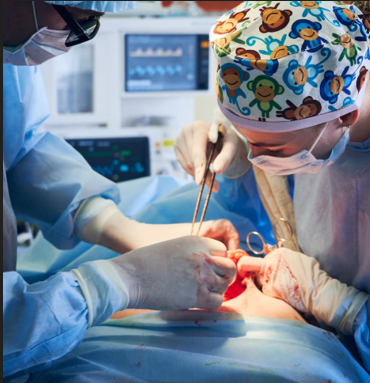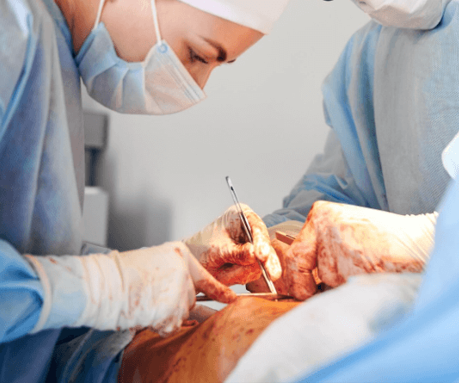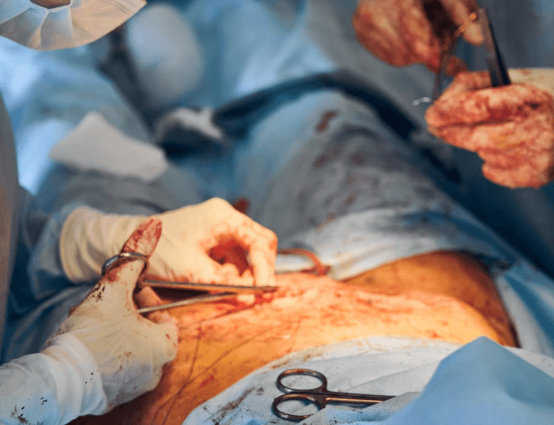Treatment Overview
The High-Definition Laparoscopic Total Hysterectomy (HDLTH) in Korea represents a breakthrough in women’s health surgery, combining the benefits of minimally invasive laparoscopy with state-of-the-art high-definition 3D visualization. This procedure involves the complete removal of the uterus, including the cervix, through several small incisions using advanced laparoscopic instruments.
Korean gynecologic centers are globally recognized for their precision-driven laparoscopic surgery, enhanced by ultra-HD cameras, fluorescence-guided imaging, and AI-assisted navigation systems. This technology allows surgeons to view intricate pelvic structures in remarkable detail, ensuring accurate dissection, minimal blood loss, and rapid recovery. The procedure is tailored to each patient, addressing complex conditions like fibroids, adenomyosis, endometriosis, or early-stage cancer with unmatched precision and safety.
Purpose & Benefits
The main goal of a High-Definition Laparoscopic Total Hysterectomy is to provide a safe, effective, and cosmetically refined surgical solution for conditions requiring uterine removal.
Purpose:
- Treats uterine fibroids, endometriosis, adenomyosis, or abnormal bleeding
- Manages uterine or cervical pathology not responsive to medical therapy
- Prevents recurrence of gynecologic disease with a total uterine removal approach
Benefits:
- Crystal-clear HD visualization for accurate and safe tissue dissection
- Minimal scarring due to small incisions
- Reduced bleeding, pain, and infection risk
- Shorter hospital stay (1–2 days on average)
- Rapid recovery and return to daily activities within 1–2 weeks
- Improved cosmetic outcome and overall patient comfort
Ideal Candidates
This surgery is ideal for women who:
- Have symptomatic fibroids, chronic pelvic pain, or abnormal uterine bleeding
- Have adenomyosis or endometriosis resistant to non-surgical treatment
- Require complete removal of the uterus and cervix for medical or preventive reasons
- Prefer a minimally invasive and aesthetically superior surgical approach
- Are in good general health and suitable for laparoscopic anesthesia
Korean hospitals use pre-surgical imaging and pelvic evaluations to determine the best approach for each patient, ensuring personalized surgical planning.
Possible Risks & Complications
Although the safety profile of HDLTH in Korea is extremely high, potential risks include:
- Minor bleeding or infection
- Temporary urinary or bowel disturbances
- Rare injury to bladder, ureter, or surrounding organs
- Anesthesia-related complications (rare)
- Postoperative adhesions or mild pelvic pain
These risks are minimized through the use of AI-assisted imaging, real-time navigation, and Korea’s internationally certified surgical protocols.
Surgical Techniques Used
Korean surgeons utilize several advanced laparoscopic methods to perform High-Definition Total Hysterectomy with maximum precision:
- 3D/4K Ultra-HD Laparoscopic Imaging: Provides enhanced depth perception and superior tissue visualization.
- Fluorescence-Guided Imaging (Firefly™ or ICG): Highlights vascular and nerve structures for safe dissection.
- Energy-Based Sealing Systems: Uses ultrasonic or bipolar instruments to minimize blood loss.
- Single-Port or Multi-Port Access: Chosen based on uterine size and patient anatomy for best cosmetic outcome.
- AI & Robotic Integration (Hybrid System): Combines human expertise with robotic stability for complex cases.
These refined surgical techniques have positioned Korea as one of the top destinations for advanced hysterectomy procedures.
Recovery & Aftercare
Recovery after a High-Definition Laparoscopic Total Hysterectomy in Korea is typically smooth and rapid. Most patients are discharged within 24–48 hours and can resume light activity in 5–7 days.
Aftercare guidelines include:
- Pain management and antibiotic therapy
- Avoiding heavy lifting and strenuous activity for 4–6 weeks
- Routine follow-up appointments and imaging to ensure healing
- Hormonal assessment and pelvic floor rehabilitation (if required)
Many Korean hospitals offer comprehensive post-surgery recovery programs that include personalized nutrition, physiotherapy, and holistic hormone balance care to optimize patient well-being.
Results & Longevity
Patients experience lasting relief from symptoms such as heavy bleeding, pelvic pain, and pressure after undergoing HDLTH. The surgery completely eliminates conditions originating in the uterus, providing a permanent solution for many gynecologic disorders. Results are long-term, with minimal scarring and enhanced quality of life. Korea’s emphasis on tissue preservation and post-surgical wellness ensures that recovery outcomes are both functional and aesthetic.
Treatment Process in Korea
Korea’s High-Definition Laparoscopic Hysterectomy Programs are globally regarded for their precision, technology, and patient-centered design.
Typical treatment steps include:
- Preoperative Evaluation: Comprehensive gynecologic imaging (MRI, 3D ultrasound), hormonal testing, and physical examination.
- Customized Surgical Planning: AI-assisted mapping to plan incision points and organ removal paths.
- Surgery: Performed with HD or 4K laparoscopic visualization systems for maximum clarity and safety.
- Postoperative Recovery: Advanced recovery suites with real-time monitoring, rapid discharge protocols, and follow-up coordination.
Unique to Korea are HD 4K endoscopic systems, fluorescence-guided imaging, and AI-assisted surgical navigation, all contributing to safer, faster, and aesthetically refined hysterectomy outcomes. Additionally, Korea’s medical centers offer multilingual support, concierge-style recovery care, and international accreditation (JCI-certified hospitals), making it one of the world’s leading destinations for minimally invasive gynecologic surgery.
Cost Range
The cost of a High-Definition Laparoscopic Total Hysterectomy in Korea typically ranges from USD 6,500 to 12,000, depending on the hospital, surgeon’s experience, and the use of additional imaging or robotic systems.
This price generally includes:
- Preoperative tests and imaging
- Anesthesia and surgeon’s fees
- Operation and hospital stay (1–2 days)
- Post-operative monitoring and consultation
Korea’s pricing remains 30–50% lower than equivalent procedures in Western countries, while maintaining superior medical quality, advanced technology, and exceptional patient satisfaction.
Popular Clinics
- Severance Hospital (Yonsei University Health System, Seoul): Leader in advanced laparoscopic and robotic gynecologic surgeries with 4K imaging systems.
- Asan Medical Center (Seoul): Known for complex hysterectomy cases using high-definition endoscopic visualization.
- Samsung Medical Center (Seoul): Combines HD laparoscopy with fluorescence and AI-guided precision tools.
- CHA Gangnam Medical Center: Specializes in fertility-preserving gynecologic surgery and post-surgical recovery programs.
- Ewha Womans University Medical Center: Offers world-class minimally invasive gynecologic care and international patient programs.



